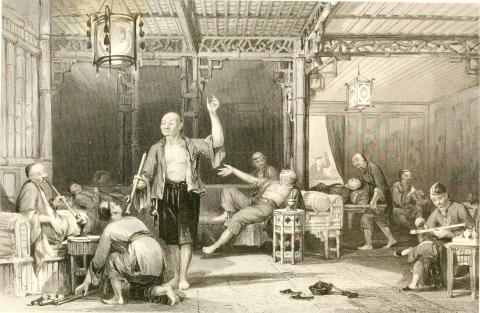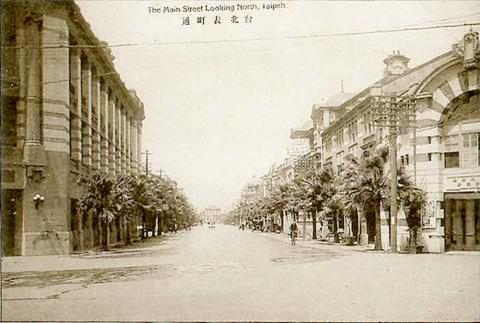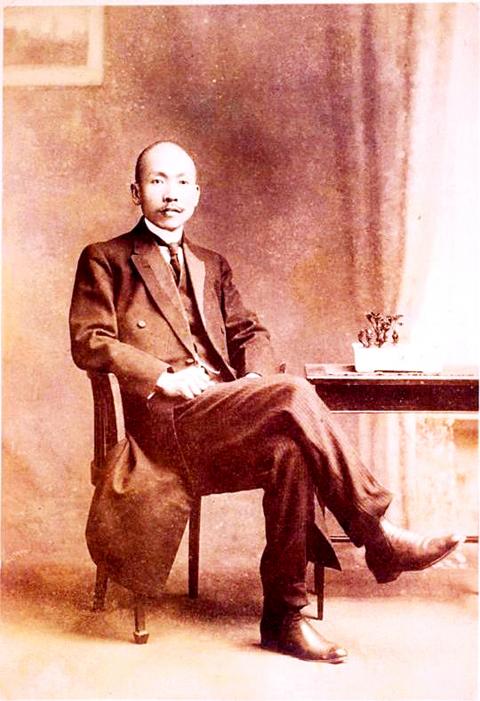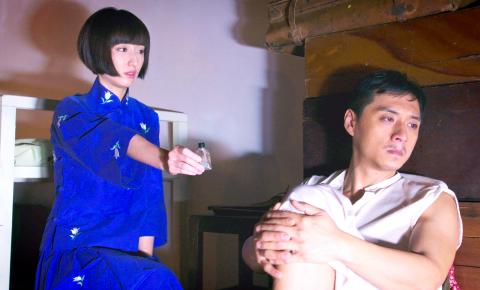Jan. 23 to Jan. 29
Chiang Sung-hui (蔣松輝) waited until the regular staff at the telegram office got off work. The remaining workers did not understand English, and this was the Taiwan People’s Party’s (台灣民眾黨) best chance to get their message, written in broken English, to the League of Nations.
The one-sentence telegram accused the Japanese colonial government of relaxing opium prohibition rules and asked the League to intervene.

Photo courtesy of Wikimedia Commons
Since the Japanese had a monopoly over the production and sale of opium in Taiwan, the party believed that they’d never had any intention of eradicating the social vice despite vowing to do so 35 years previously, in 1895.
Upon taking over Taiwan, the Japanese pushed a “gradual prohibition” policy by issuing licenses to a limited number of qualified smokers. The government seemed to be on the right track as the number of legal smokers dropped, and in 1912 they signed the International Opium Convention, which mandated that signatories “use their best endeavors to control, or to cause to be controlled, all persons manufacturing, importing, selling, distributing and exporting” drugs such as opium.
Japan stopped issuing new opium licenses in 1908, and the number of legal users dropped dramatically. The government’s opium monopoly remained lucrative as they raised prices every year, but it no longer occupied such a large proportion of the colony’s total revenue as the economy diversified.

After the 1925 Geneva Opium Convention, the government in 1928 announced plans to close down smoking locales and build addiction treatment centers. But in 1929, an amendment was added, proclaiming jail time for illegal addicts. It also announced that they could apply for a license, declaring that it was more humane.
“If we allow opium addicts to destruct on their own, it will be a dark blemish on our glorious policies,” the announcement concluded.
This sudden decision to issue licenses to about 25,000 additional users further raised suspicions among Taiwan People’s Party leaders, who had been calling for immediate prohibition for years. They started a colony-wide campaign, making public speeches and repeatedly protesting the new provisions.

Photo courtesy of Wikimedia Commons
Taiwanese physicians also joined the fight. A Tainan Medical Association petition requested that the governor-general issued additional licenses only to addicts whose lives would be threatened if cut off. They also called for medical examinations for license holders to deem whether they were treatable — and if so, they should be rehabilitated by force. They also asked the government to limit all smoking activities to state-run opium houses.
Investigators from the League of Nations arrived on Feb. 19, 1930. They were on an eight-month trip to Asia to investigate the region’s drug use, and their arrival was most likely not in direct response to the telegram. Nevertheless, despite government objections, the investigators met with party leaders Chiang Wei-shui (蔣渭水) and Lin Hsien-tang (林獻堂) on March 1 to discuss the problem further.
Although the government did not change course, Lo Ming-cheng (駱明正) writes in the book Doctors without Borders: Profession, Ethnicity and Modernity in Colonial Taiwan, the Taiwan People’s Party’s criticisms “were widely circulated in the media and were greatly influential.”

Photo courtesy of Sanlih Entertainment Television
“[For] the new generation, smoking opium was seen as the result of state manipulation rather than merely the continuation of a traditional habit,” he adds.
However, wanting to maintain its international image, the government finally started to actively treat and rehabilitate addicts. The effort was led by physician Tu Tsung-ming (杜聰明), who worked tirelessly for years, reportedly curing Taiwan’s “last opium addict” in 1946.
A side episode from this incident was the downfall of noted intellectual and historian Lien Heng (連橫), the grandfather of former vice president Lien Chan (連戰), who publicly supported the government’s stance in an editorial in the local newspaper. It began by stating that Han Chinese settlers would not have been able to survive the harsh conditions in Taiwan without opium, and concluded that the government was on the right path to eventual eradication.
“This time, special licenses will only be given to 25,000 more people, which is just 0.5 percent of the population,” he writes. “It isn’t a big deal, why has it caused so much debate?”
Lien was quickly ostracized by the Taiwanese elite, leading to the General History of Taiwan (台灣通史) author’s eventual departure for China. He never returned.
Taiwan in Time, a column about Taiwan’s history that is published every Sunday, spotlights important or interesting events around the nation that have anniversaries this week.

This month the government ordered a one-year block of Xiaohongshu (小紅書) or Rednote, a Chinese social media platform with more than 3 million users in Taiwan. The government pointed to widespread fraud activity on the platform, along with cybersecurity failures. Officials said that they had reached out to the company and asked it to change. However, they received no response. The pro-China parties, the Chinese Nationalist Party (KMT) and Taiwan People’s Party (TPP), immediately swung into action, denouncing the ban as an attack on free speech. This “free speech” claim was then echoed by the People’s Republic of China (PRC),

Exceptions to the rule are sometimes revealing. For a brief few years, there was an emerging ideological split between the Democratic Progressive Party (DPP) and Chinese Nationalist Party (KMT) that appeared to be pushing the DPP in a direction that would be considered more liberal, and the KMT more conservative. In the previous column, “The KMT-DPP’s bureaucrat-led developmental state” (Dec. 11, page 12), we examined how Taiwan’s democratic system developed, and how both the two main parties largely accepted a similar consensus on how Taiwan should be run domestically and did not split along the left-right lines more familiar in

Many people in Taiwan first learned about universal basic income (UBI) — the idea that the government should provide regular, no-strings-attached payments to each citizen — in 2019. While seeking the Democratic nomination for the 2020 US presidential election, Andrew Yang, a politician of Taiwanese descent, said that, if elected, he’d institute a UBI of US$1,000 per month to “get the economic boot off of people’s throats, allowing them to lift their heads up, breathe, and get excited for the future.” His campaign petered out, but the concept of UBI hasn’t gone away. Throughout the industrialized world, there are fears that

Most heroes are remembered for the battles they fought. Taiwan’s Black Bat Squadron is remembered for flying into Chinese airspace 838 times between 1953 and 1967, and for the 148 men whose sacrifice bought the intelligence that kept Taiwan secure. Two-thirds of the squadron died carrying out missions most people wouldn’t learn about for another 40 years. The squadron lost 15 aircraft and 148 crew members over those 14 years, making it the deadliest unit in Taiwan’s military history by casualty rate. They flew at night, often at low altitudes, straight into some of the most heavily defended airspace in Asia.